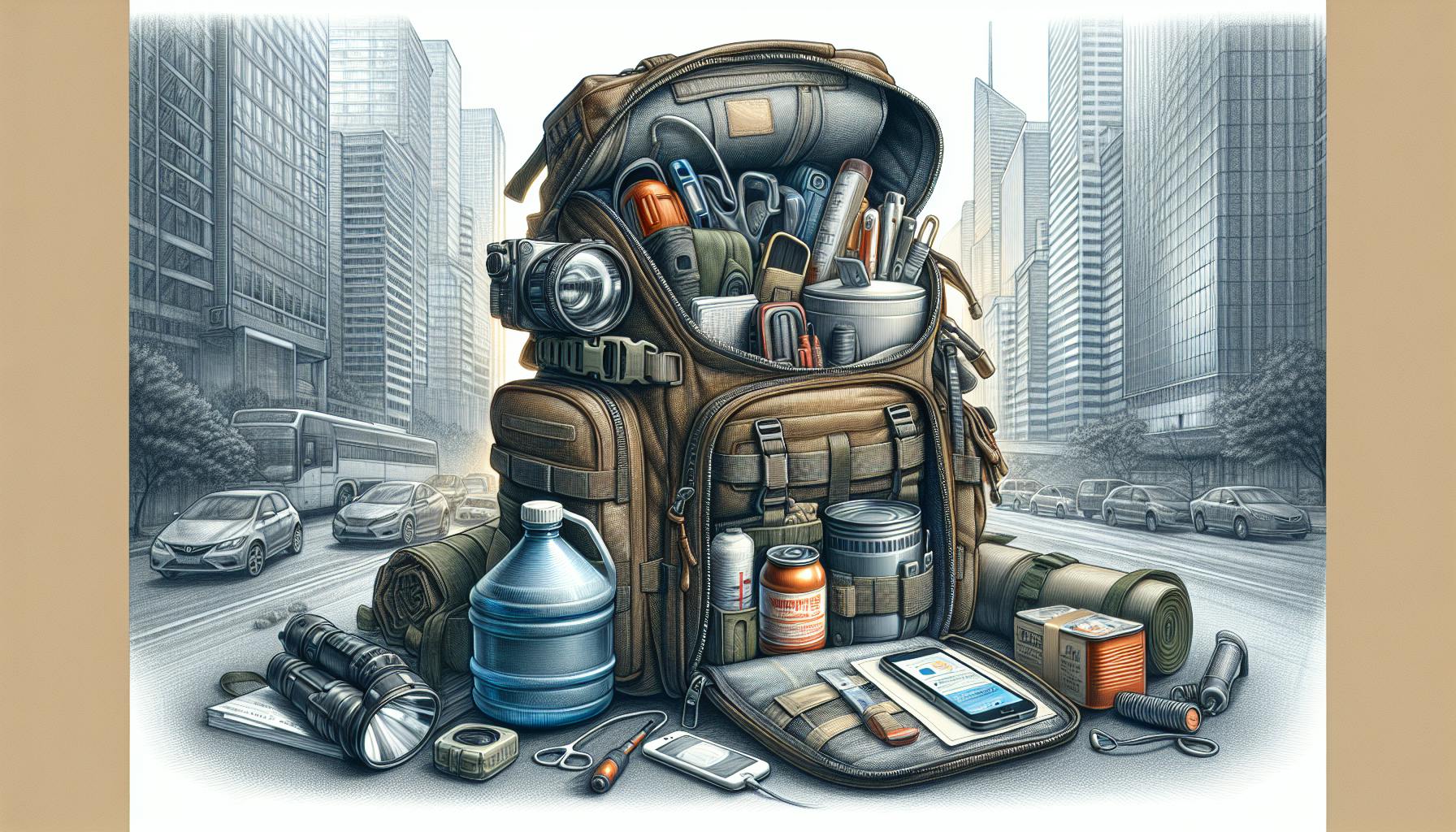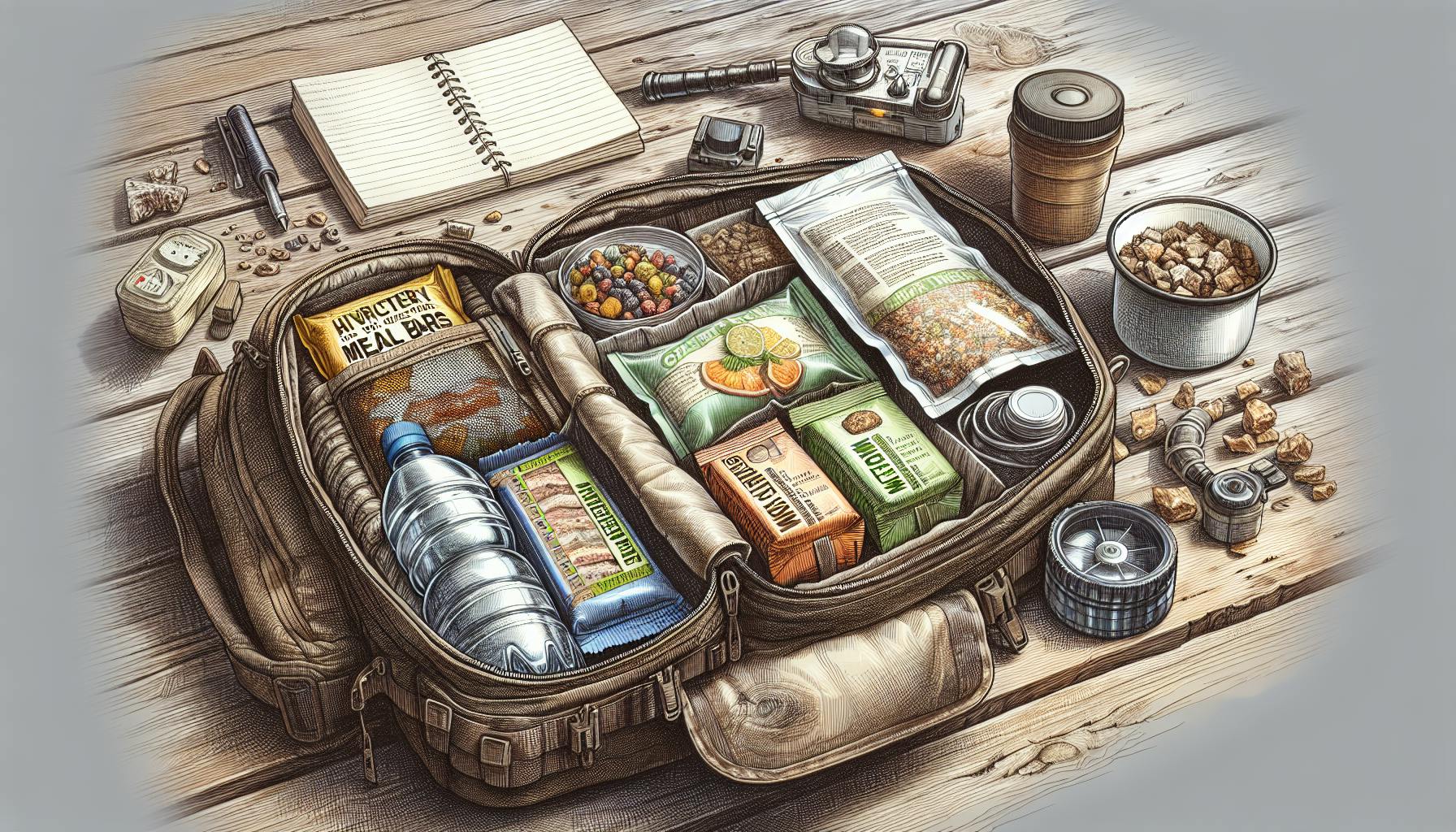When first starting out, prepping can seem daunting for beginners without guidance on where to start.
This article provides a comprehensive prepping list tailored for newcomers, with basic must-haves, easy to acquire gear, and key steps to embark on preparedness the right way.
You'll discover fundamental prepping concepts, budget-friendly supplies to stock up on, and a roadmap to assemble your first beginner-friendly emergency kit for home and family.
Embarking on Preparedness: Introduction to Prepping for Beginners
Prepping refers to preparing for emergencies or disasters by stockpiling essential supplies. This introductory guide covers the basics to help beginners start their own prepping list.
Understanding the Fundamentals of Prepping
Prepping involves:
- Identifying potential emergency scenarios such as natural disasters, extended power outages, etc.
- Creating a list of essentials - food, water, first aid, tools, etc. - needed to survive the emergency
- Acquiring and organizing the prepping list items so they are ready to use
The prepper lifestyle centers around self-reliance, survival skills, and being proactively prepared. Prepping equips people to handle life's uncertainties and provides peace of mind.
The Advantages of Adopting a Prepper Lifestyle
Key benefits of prepping include:
- Increased safety for yourself and family in the event of an emergency
- Greater self-sufficiency so you can get through difficult times without outside support
- Stress reduction since your most basic needs are already prepared for
- Confidence to act quickly in any situation knowing you have a plan
Identifying Potential Threats and How Prepping Helps
Common threats prepping helps mitigate risks for include:
- Natural disasters - storms, earthquakes, floods, fires, etc. A 14-day emergency kit ensures temporary survival.
- Extended utility failure - stockpiled food, water, batteries, and alternative cooking capacity keeps disruption minimal.
- Economic decline - financial savings and a homesteading approach (gardening, raising animals) reduces reliance on volatile systems.
Careful emergency preparedness analysis and planning ensures your prepping list directly addresses your most likely risks.
Cultivating the Prepper Mindset for Success
Successfully adopting a prepper lifestyle requires:
- Proactive planning - don't wait until it's too late. Make preparedness a priority now.
- Continuous learning - expand your knowledge of survival tactics, self-sufficiency skills, emergency response, and useful gear.
- Becoming adaptable - ready to adjust plans to handle changing conditions and stay safe.
Follow these beginner guidelines to start assembling your own prepping list today. Consistency and vigilance are key to developing lasting habits for emergency preparedness.
What are good things to stockpile?
Experts recommend starting your stockpile by gathering essentials like non-perishable food, water, flashlights, radios, and copies of important documents. Here is a beginner's list to get you going:
Food and Water
- Canned goods like beans, vegetables, fruit packed in juice. Avoid salty foods that will make you thirsty.
- Water bottles or jugs adding up to 1 gallon per person per day for at least 3 days. Consider water purification methods like filters or chemical treatment.
- Dried foods like granola bars, nuts, beef jerky. These store well if kept dry and airtight.
Gear and Tools
- LED flashlights and extra batteries
- Battery-powered or hand crank radio
- Manual can opener that doesn't require electricity
- Matches, lighter, candles, camping stove
- Basic tools like a knife, duct tape, work gloves
Important Documents
- Copies of ID cards, health insurance, prescriptions
- Contact information for relatives, doctors
- Map of local area in case digital navigation fails
Beginners don't need fancy equipment or huge quantities. Start small with versatile items, and gradually build up your stockpile as your skills improve. The key is staying organized, taking inventory, and rotating perishable goods.
How do you start prepping for beginners?
For those new to prepping, the key is starting with the basics. Build a solid foundation for preparedness with these simple beginner steps:
- Make a list of potential emergency scenarios you want to prepare for, like power outages, severe storms, or supply chain disruptions. Consider your location, job, lifestyle, and family situation.
- Build a 2-week pantry so your household can be self-reliant if stores close or deliveries get disrupted. Prioritize shelf-stable foods/fluids, backup power sources, hygiene/sanitation supplies, and any vital medications.
- Pack a bug out bag with 3 days' worth of survival essentials in case you need to evacuate urgently. Include food, water, clothes, first aid, tools, communication devices, cash, and copies of key documents. Keep this bag somewhere accessible so it's always ready to go.
- Prepare small grab-and-go bags for each family member. Get home bags help you return safely if away from home during a crisis. Everyday carry (EDC) kits include a flashlight, knife, lighter, phone charger, and other daily tools.
The key is taking it step-by-step. Start with the basics above. Once those are covered, you can grow your preparedness skills and supplies. But don't get overwhelmed at first. Use checklists and focus on foundational items for short-term crises as a prepper beginner. Consistency over time brings resilience.
What is food prep list?
A prepping list, sometimes called a food prep list, is an inventory of essential supplies that preppers compile and maintain as part of their preparedness efforts. At its core, a prepping list helps individuals and families ensure they have the gear, tools, food, water, and other vital items on hand to survive disasters or emergency situations.
For beginners just getting started on their prepping journey, developing an effective prepping list is one of the most fundamental and useful steps to take. Below are some tips to help prepping novices craft a basic prepping list with some of the most crucial supplies to stock up on.
Start with the basics
Beginner preppers don't need fancy or expensive equipment right off the bat. Focus first on stockpiling basic necessities like shelf-stable food, water, first aid items, flashlights, and cash. Popular starter items include:
- Bottled water and water purification tablets
- Canned goods like beans, vegetables, fruit, and soup
- Granola bars, protein bars, nuts and dried fruit
- First aid kit with bandages, antibiotic ointment, medicines, etc.
- Hand crank or battery powered flashlight and radio
- Extra batteries, phone chargers
- Prescription medications
- Personal hygiene items
- Cash in small denominations
Building up a reserve of these basic goods helps new preppers cover fundamental survival needs in an emergency.
Expand your list over time
After establishing a foundation of basics, new preppers should gradually work on expanding their prepping list by accumulating more advanced gear over time. Some items to consider adding next:
- Camp stove, cooking fuel, mess kits
- Tents, sleeping bags, blankets
- Boots, extra clothing suitable to climate
- Two-way radios
- Alternative light sources like candles, light sticks
- Water filters and treatment solutions
- Shovel, rope, duct tape, tools
- Maps, emergency whistle, compass
Expanding your list with versatile items like these helps boost emergency preparedness as a beginner prepper. Just take it step-by-step based on your personal needs and living situation.
By starting with the basics and steadily accumulating key supplies, beginning preppers can craft an effective survival list tailored to their unique situations. Develop smart priorities, cover the fundamentals first, and progress steadily from there.
sbb-itb-b932644
What are 20 items in a emergency kit?
KNOW MORE ABOUT THE SPECIFICS OF WHAT YOUR DISASTER EMERGENCY KIT NEEDS BY READING MORE BELOW:
- Family first aid kit.
- Supply of medicine for 7 days.
- Lots of drinking water.
- Special needs of children, older adults, and persons with disabilities.
- Special needs of your pets.
- Standalone flashlights.
- Candles and matches, glowsticks.
Assembling Your Beginner Prepper List 2023
A contemporary guide to essential items that every new prepper should consider for their list, tailored to the realities and challenges of 2023.
Securing a Reliable Water Supply: 14-Day Emergency Kit List
Calculating your family's water needs for a 2 week period is an essential first step when preparing an emergency water supply. The standard recommendation is to store at least 1 gallon of water per person per day. Be sure to factor in any pets when tallying your water needs.
Good options for water storage as a beginner prepper include:
- Store-bought bottled water or canned water boxes. Easy to acquire and transport.
- Water storage barrels designed for long term water storage. Look for food-grade plastic barrels.
- Water filtration devices like portable water filters or purification tablets to filter found water sources in an emergency.
Rotate and refresh your stored water supply every 6 months. Mark storage containers with purchase/expiry dates.
Creating a Sustainable Food Stockpile for Beginners
When creating your beginner food stockpile, focus on shelf-stable foods with a long storage life that meet nutritional requirements:
- Canned goods: Canned vegetables, fruits, beans, soups, meats and seafood can last 2-5 years when stored properly. Prioritize canned protein like tuna.
- Grains: White rice, pasta, oats, flour store well long-term. Ensure you have cooking fuel if storing grains.
- Fats & Oils: Vegetable oils, shortening, nuts and seeds offer essential fats and calories. Rotate every 1-2 years.
- Shelf-stable dairy: Powdered milk, canned evaporated milk
- Snacks: Granola bars, crackers, dried fruit and nuts
Store food in a cool, dark place like a basement or pantry. Consider adding supplemental vitamins to boost nutrition if relying on shelf-stable food.
Essential First Aid and Hygiene for Emergency Kits
A well-stocked first aid kit and basic hygiene supplies are vital for an emergency scenario. Be sure to include:
- Adhesive bandages
- Gauze rolls and pads
- Triangular bandages
- First aid tape
- Antibiotic ointment
- Antiseptic wipes
- Medications like pain/fever relievers, anti-diarrhea meds, allergy meds
- First aid guide
- Bar soap
- Toothbrushes and toothpaste
- Feminine hygiene products
- Toilet paper
- Hand sanitizer
Rotate medications 1-2 times per year and replace any expired products. Consider taking first aid and CPR courses for added preparedness.
The Survival Kit List: Tools and Equipment for Self-Reliance
In addition to food, water and first aid, a well-rounded survival kit should contain tools, supplies and equipment needed for self-reliance:
- Flashlights, lanterns, batteries
- Battery, solar or crank powered radio
- Multi-tool knives
- Fire making tools like matches, lighters
- Warm blankets, clothing
- Emergency whistle and signal devices
- Local maps
- Duct tape
- N95 respirator masks
- Work gloves and protective eyewear
Tailor your survival items to likely emergency scenarios in your region while ensuring coverage for general preparedness.
Prepping for Financial Security and Defense
As a financial prep, build an emergency cash fund that covers 2-6 months of living expenses. Keep some small bills and coins for transactions during disasters. Those new to prepping should also:
- Photograph key documents and identification. Store copies securely offline and in cloud storage.
- Ensure adequate insurance coverage for health, property, auto
- Install surge protectors, firewalls, antivirus software to protect devices/networks from cyber attacks
- Create secure offline and cloud backups of valued files and data
Read reputable prepper resources to continue expanding your knowledge, skills and resources for handling emergencies. Consistency and vigilance are key for those pursuing a preparedness lifestyle.
Implementing Your Prepping List: A Beginner's Roadmap
Getting started with prepping can feel overwhelming, but having a plan makes it manageable. Here's a roadmap for beginners to effectively put their prepping list into practice:
Strategic Acquisition of Prepping Supplies
When building your supply of prepping gear and food, take a long-term, affordable approach:
- Make a prioritized list of needed items
- Set a reasonable budget per month for prepping
- Take advantage of sales, coupons, etc. to save money
- Start with versatile items that cover multiple needs
- Slowly acquire key items over time
Building systematically creates sustainability for the long haul.
Effective Organization and Inventory Management
Proper storage and organization keeps your prepping supplies accessible:
- Categorize items (food, water, gear) for easy finding
- Use clear plastic totes and shelving to see contents
- Take inventory 1-2 times per year and replace expired/missing items
- Log supplies info like purchase date/expiration in a spreadsheet
Staying organized is vital when you need supplies quickly!
Maintaining and Rotating Supplies to Stay Current
To keep your prepping supplies ready for use:
- Set reminder to routinely cycle and replace food/batteries
- Check gear functionality and repair/replace damaged items
- Use and replenish medical kits, hygiene items, before expiry
- Store extra fuel stabilizer to extend gas/diesel lifespan
Through proper maintenance, your carefully-built stockpile retains its usefulness.
Skill Development and Preparedness Drills
Complement your physical prepping supplies by gaining self-reliance skills:
- Take first aid courses and practice skills learned
- Learn techniques to start fire, purify water, and identify edible plants
- Conduct household emergency drills for evacuation, shelter-in-place, etc.
- Test your ability to rely on your preps if utilities/services were interrupted
Hands-on skills will prove invaluable when plans must flex to unpredictable events.
Fostering Perseverance in Prepping Endeavors
Avoid burning out by:
- Connecting with like-minded preppers for motivation
- Setting specific, achievable prepping goals
- Celebrating small milestones toward preparedness
- Reminding yourself regularly why prepping matters to you
With community support and focus, you can maintain your dedication over the long term.
Stay motivated on your prepping journey! Start modestly, expand strategically, keep organized, retain skills, connect with others - you'll be well on your way to prepping list actualization and greater peace of mind.
The Essential Summary: Key Takeaways for Prepping Success
Prepping effectively requires planning, prioritization, and persistence. Here is a quick checklist covering the key takeaways for prepping success:
Craft a comprehensive prepping list
- Start with basic necessities - water, food, shelter, first aid.
- Research and add gear for your likely emergency scenarios.
- Focus first on low-cost items readily available at home or stores.
Learn essential preparedness skills
- Take first aid and CPR courses.
- Practice outdoor survival skills like fire-building.
- Train on using any specialized gear you acquire.
Store gear and supplies properly
- Use packaging to prevent spoilage or damage.
- Organize supplies so they are easy to access.
- Rotate stock to keep it fresh and up-to-date.
Following these simple principles outlined above will help any newcomer establish a solid foundation for emergency preparedness. Maintaining vigilance over time is key to staying truly ready for adversity.


